Volstad Orders NES Battery Pack for Subsea Construction Vessel
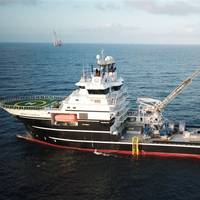
Norway's Volstad Maritime has contracted HAV Group subsidiary Norwegian Electric Systems (NES) to deliver the battery package and associated control system for battery charging to one of its subsea construction vessels.Bergen-based NES will provide the equipment to the Deep Cygnus in connection with a forthcoming vessel upgrade to battery power notation before the vessel enters a new charter contract in early 2024.During the past six months, Volstad Maritime has also contracted NES to deliver similar battery packs and charging system to the Volantis…
HAV's NES to Supply Battery Pack for Offshore Construction Vessel
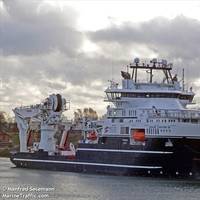
Norwegian offshore vessel owner Volstad Maritime has contracted Norwegian Electric Systems AS (NES) to deliver the battery pack and associated control system for battery charging to the Grand Canyon III offshore construction vessel. “The demand for retrofitting battery power on board offshore vessels continues to grow as many shipowners, such as Volstad Maritime, are dedicated to reducing their carbon footprint. Lower operating expenditure through reduced fuel consumption is an additional…
Helix, Volstad Agree Long Term Charters for Construction Support Vessel Duo
Helix Robotics Solutions Limited, the U.K. Robotics division of Helix Energy Solutions Group, and the Norwegian shipowner Volstad Maritime have agreed on five-year charter extensions for both the Grand Canyon II and Grand Canyon III construction support vessels to continue working on projects across multiple energy sectors.The two vessels have been under long-term charter with Helix since 2015 and 2016, respectively. The extended charter for the Grand Canyon II runs from January 2023 through the end of 2027, while the extended charter for the Grand Canyon III runs from May 2023 through May 2028, with a further option to extend. Financial details were not disclosed.
First Deep Sea Exploration of the Perth Canyon Begins Today
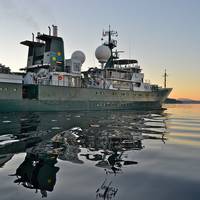
The first deep-sea exploration of the Perth Canyon, Australia's largest undersea valley, will launch today, Phys.org is reporting. The 12-day expedition is backed by Google billionaire Eric Schmidt and will study the conditions and marine life inside the canyon, which researchers hope will provide new information about the effects of climate change. A team of researchers from the University of Western Australia led by Professor Malcolm McCulloch will collaborate with researchers from the Western Australia Museum…
NES Powers Up in Competitive Market
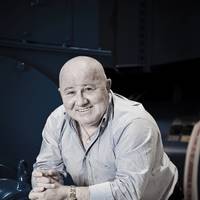
Last year Bergen’s Norwegian Electric Systems (NES) made a bold claim. The designer and manufacturer of diesel electric and hybrid electric systems for the maritime sector, established in 2009 and already past NOK 1 billion in sales revenues ($171m), revealed that it had produced the largest ever low voltage marine diesel electric system. The 690v 60Hz system was created for the 125m long, 7,500 dwt OSV Grand Canyon (pictured), released from Bergen Group’s Fosen yard to owner Volstad Management in October 2012.
MacGregor Offshore Cranes Meet Specialist Operator's Needs
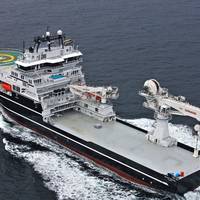
MacGregor, part of Cargotec, secured its third identical offshore crane contract for Volstad Maritime AS series of 125m offshore construction vessels being built by Bergen Group Fosen shipyard in Norway. The order is booked in the first quarter 2013 order intake. Two more active heave-compensated (AHC) MacGregor offshore cranes have been ordered for hull 091, the third in a run of 125m-long offshore construction vessels (OCVs) for Volstad Maritime AS. The vessel is part of a series…
Survey Ship Discovers Red Sea 'Grand Canyon'
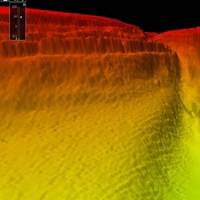
Naval survey ship 'HMS Enterprise' nets stunning images of a Grand Canyon-style ocean floor hidden deep under the Red Sea. Discovering the 250 metre deep canyon after leaving the Egyptian port of Safaga the ship used her sophisticated EM1002 Multibeam echo sounder to create the 3D images, allowing the ocean floor to be seen for the first time. Commanding Officer of HMS Enterprise, Commander Derek Rae, said: “These features could be the result of ancient rivers scouring through the rock strata before the Red Sea flooded millennia ago.
Ready Reserve Force Ships Successful in Readiness Activation Exercise
U.S. Maritime Administrator Capt. William Schubert today announced on August 26 that three Ready Reserve Force ships successfully completed readiness activation exercises. The three activated ships were the Grand Canyon State and the Gem State, both berthed in Alameda, California, and the Green Mountain State, berthed in Bremerton, Washington. Schubert said, "Readiness exercises such as these keep our ships in shape to provide the support our Armed Forces need. Forty ships of the RRF provided sealift for the Iraqi conflict, and they had an operational reliability record of 98 percent. Turbo Activations, sponsored and monitored by the Joint Chiefs of Staff and the U.S. Transportation Command, are made without notice.
Ferries Lead the Way
There are several quick conclusions you can draw about passenger boat construction in the new millennium. First it is a smaller market than 10 years ago with far fewer boats being built today than a decade ago. Secondly almost all of these vessels are built on the east or west coast. There are virtually no passenger boats being built in the south. Third, the number one vessel type being built is the ferryboat and more specifically the all-passenger ferry that shuttles people at 25 knots or better. In the years between 1987 and 1993 shipyards all over the country were building 600-passenger excursion-dinner boats in great numbers as sightseeing and dining vessels on America’s great rivers, lakes and bays became increasingly popular.
Government Ships Spend Time At Cascade
This past winter, Portland, Ore.-based Cascade General saw the arrival of several government-owned vessels from homeports such as Southern California and Alaska. The 418-ft. (127.4-m) M.V. Columbia, owned by Alaska Marine Highways was at Cascade for most of the winter for modernization of its public areas in the restaurant and café, refurbishment of the car-deck doors, installation of a laundry elevator from the car to cabin deck, and replacement of all windows in the vessel's solarium. The 30-year-old vessel will undergo an upgrade consisting of new furnishings and food-serving facilities, as well as replacement of galley equipment. Columbia, which carries 941 passengers and 174 cars on the Inland Passage from Bellingham, Wash. to Skagway, Alaska, operates during the summer months.
LMC Takes Delivery of New Vessel
Lead Mead Cruises (LMC) of Boulder City, Nev., operates a fleet of four vessels - a number that will increase to five in spring 2001 when LMC takes delivery of a 57 x 17-ft. catamaran currently under construction at Kvichak Marine. The catamaran is designed by Morrelli & Melvin and will cruise 65 miles up Lake Mead and the Colorado River to the edge of the Grand Canyon. "We really wanted a catamaran to operate on this run," said Rob Fair of LMC. Powered by twin Caterpillar 3196-TA diesel engines, rated for 660 bhp @ 2,300 rpm, and fitted to ZF 350A marine gears, the catamaran will cruise at 27 knots and top out at 32 knots. Transmissions will be fitted to 28-in., stainless steel, five-bladed propellers. Seating on the main and aft decks accommodates 68 passengers.
Bringing Magic to the Cruise Experience — the Role of Technology
"Any sufficiently advanced technology should be indistinguishable from magic" — Arthur C. As we are swept along in the surge of technology that pervades almost every aspect of our lives, we sometimes take for granted the innovations that intervene in our most complex interactions as well as our most mundane. The passenger shipping industry is no exception: from mooring systems to active stabilizers, Internet access and TV broadcasting ability; technology has 'infiltrated' every area. And these days, with virtually none of the processes undertaken by humans being completed without a technological interface of one form or another, technology has asserted itself as a sort of animated inanimate 'man's best friend'.





